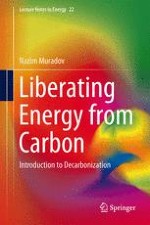2014 | OriginalPaper | Buchkapitel
2. What Is So Unique About CO2?
verfasst von : Nazim Muradov
Erschienen in: Liberating Energy from Carbon: Introduction to Decarbonization
Verlag: Springer New York
Aktivieren Sie unsere intelligente Suche, um passende Fachinhalte oder Patente zu finden.
Wählen Sie Textabschnitte aus um mit Künstlicher Intelligenz passenden Patente zu finden. powered by
Markieren Sie Textabschnitte, um KI-gestützt weitere passende Inhalte zu finden. powered by
